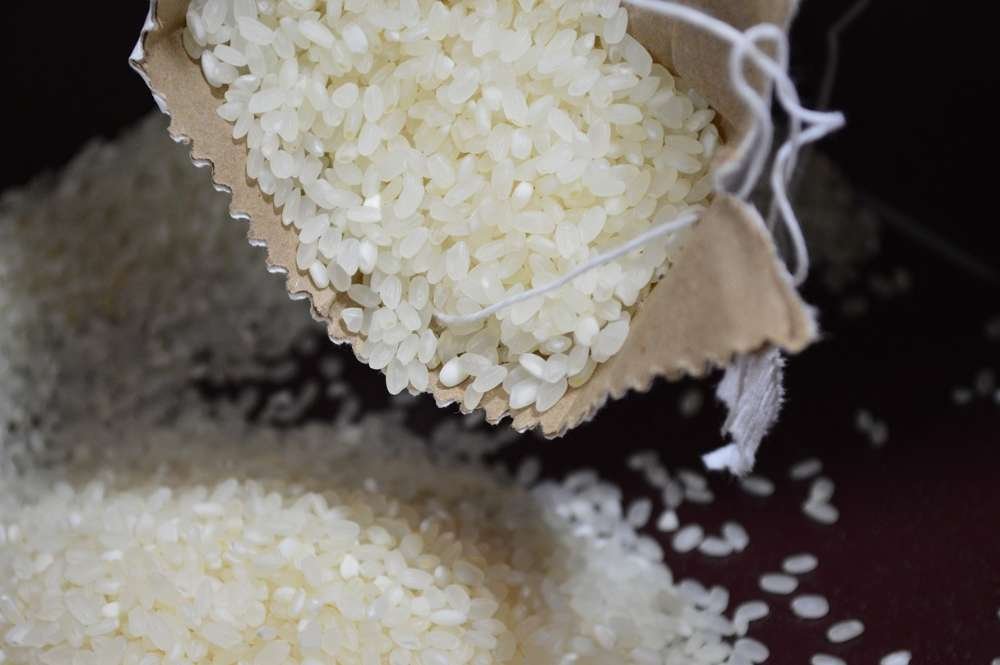If you want to make a sauce recipe that calls for cornstarch and you realize you have run out of it. Or if you are curious about what to use instead of cornstarch for thickening. I am about to give you a list of cornstarch substitutes for thickening sauce.
Some of the cornstarch replacements I mention here are also valid if you have a dietary restriction like gluten intolerance or if you are on a low carb diet.
Let’s get started!!
What Is Cornstarch and What is its Purpose?
Cornstarch is a fine, powdery substance that is made from the starch of corn kernels. It is a common ingredient used in cooking and baking as a thickener. It can also be used in other applications, such as in making adhesives, cosmetics, and paper products.
The process of obtaining cornstarch is rather simple. The corn kernels are first steeped in water to soften them.
Then the outer layers of the kernel are removed. The remaining starch is then washed and dried and finally milled into a fine powder.
Cornstarch is a versatile ingredient that makes its way into a variety of recipes, including sauces, gravies, soups, and custards. You can also use it in baking to thicken pie fillings and to lighten the texture of cakes and cookies. Additionally, you can use it as a substitute for all purpose flour in some recipes for those who are gluten-free or have celiac disease.
But let’s admit it; we sometimes don’t have it at hand. That is when you need cornstarch substitutes for thickening sauce.
1. Wheat Flour. The most common cornstarch substitute for thickening

For a few reasons, flour is the most common substitute for cornstarch as a thickener.
Firstly there is the availability factor. Flour is a staple ingredient you commonly have at home. This makes it a convenient replacement for cornstarch when you don’t have any.
Then there is the flour thickening power. Flour has a similar thickening power to cornstarch. This means you can use it in similar amounts to achieve the desired consistency in a recipe.
Third is flour cooking versatility. You can use flour as a thickener in both hot and cold liquids. While you can only use cornstarch in hot liquids. This makes flour a more versatile ingredient for thickening a variety of dishes.
Lastly, there is the cost. Flour is generally less expensive than cornstarch, making it a more cost-effective option if you are on a budget.
Consequently, it’s essential to remember that flour has a slightly different taste and texture than cornstarch. It may affect your dish’s overall flavor and consistency. Additionally, it takes longer to thicken than cornstarch and may require more cooking time to avoid a raw flour taste.
But for sure, flour is the most common cornstarch substitute for thickening sauce.
2. Substitute cornstarch with Potato Starch

Potato starch is an excellent substitute for cornstarch as a thickener. It has a neutral flavor and a high binding strength. This makes it an excellent thickener for sauces, gravies, and soups. It also has a slightly higher thickening power than cornstarch.
It’s important to note that potato starch can make a dish slightly cloudy and may add a slightly sweet flavor. So, it’s best to use it in recipes where those characteristics won’t affect the final outcome of the dish.
Here are the steps to create this cornstarch substitute for thickening sauce. with potato starch:
- Determine the amount of cornstarch called for in the sauce recipe.
- Use an equal amount of potato starch as a substitute for cornstarch. For example, if the recipe calls for 1 tablespoon of cornstarch, use 1 tablespoon of potato starch instead.
- Mix the potato starch with a small amount of cold water to create a slurry. This will help prevent clumping when you add the potato starch to the hot sauce.
- Add the potato starch slurry to the hot sauce slowly, stirring constantly. The potato starch will begin to thicken the liquid as it heats up.
- Cook the sauce or gravy for a few minutes until it reaches the desired consistency. If the mixture is too thick, add more liquid to thin it out. If it’s too thin, add more potato starch slurry a little bit at a time until you get the desired consistency.
3. Rice flour.

Although rice flour is not a common pantry ingredient, at least not in my kitchen, it makes an excellent substitute for cornstarch. Rice flour is a type of flour that derives from ground rice grains. You can find rice flour made either from white or brown rice.
Rice flour has a fine texture and a slightly sweet, nutty flavor. It is popular in a variety of cuisines around the world, particularly in Asian and Middle Eastern cooking. It has fantastic thickening properties.
My grandma used to boil rice and use the water as a cornstarch substitute for thickening sauce.
4. Arrowroot
Arrowroot is a starch obtained from the rootstock of tropical plants. It is an ancient ingredient with common uses in traditional medicine and cooking.
Arrowroot powder is a fantastic option as a thickening agent for sauces and a perfect substitute for cornstarch.
It is pure starch and does not contain gluten, which makes it an excellent thickening agent for gluten-free recipes as well.
This cornstarch substitute has a neutral flavor and won’t alter your sauce’s taste. It thickens at a lower temperature than cornstarch or flour. This means you can add it towards the end of cooking and still achieve the desired consistency.
It forms a transparent, glossy gel that is more visually appealing than other thickening agents.
To use arrowroot as a thickening agent, mix it with a small amount of cold liquid to form a slurry, then gradually add it to the hot sauce while stirring constantly.
It is important to note that arrowroot starch does not freeze well and may break down when reheated.
You can buy it at Walmart or a natural food supplier near you.
5. Tapioca

Tapioca is a starchy substance that is extracted from the roots of the cassava plant, also known as yucca or manioc.
The cassava or yuca plant is native to South America but also grows in many tropical regions worldwide.
Tapioca starch makes an excellent cornstarch substitute for thickening sauces. In its raw form, tapioca has a white, powdery appearance, but when cooked, it becomes translucent and slightly chewy in texture.
To use tapioca flour as a thickener, you will need to mix it with cold water or another liquid to create a slurry before adding it to your sauce. The ratio of tapioca to liquid will depend on the recipe and the desired thickness, but a standard ratio is 1 tablespoon of tapioca to 1 cup of liquid.
6. Glucomannan
Glucomannan is a dietary fiber found in the root of the konjac plant, which is native to Asia. It is a water-soluble polysaccharide with practical applications like a dietary supplement or a thickener in food products.
It has a fantastic ability to absorb water and form a gel-like substance, making it a tremendous thickening agent. On top of that, it is gluten-free and low-carb. It also improves the texture and mouthfeel of food products.
Although you can use glucomannan as a thickener in sauces, it is essential to use it in the correct amount to avoid creating a gel-like texture that may be undesirable in a sauce.
Add to your sauces in small amounts and mix it with cold water before adding it to the hot sauce.
To replace cornstarch with glucomannan, use around 1/4 teaspoon of glucomannan for every 2 tablespoons of cornstarch.
7. Psyllium husk
Psyllium husk is a soluble fiber found in plants that have thickening properties.
You will need a small amount of it to thicken your sauce. You should start testing with 1/4 teaspoon of Psyllium husk and add more as you need.
8. Xanthan gum
Xanthan gum is a food supplement quite popular in the food industry due to its thickening power.
It is a fine white powder, which you can find in the spices section of your grocery store.
It’s worth mentioning that some people can be intolerant to Xanthan gum when they consume it in large quantities.
Therefore, use a small amount of Xanthan gum to thicken your sauce. The package it comes in has instructions on its use; follow those to substitute the cornstarch.
9. Guar gum
Guar gum is a natural, plant-based substance that derives from the seeds of the guar bean (Cyamopsis tetragonoloba). It can absorb water and create a gel-like consistency, making it an effective thickening agent for various food applications, including sauces.
To use guar gum as a thickener, start by adding a small amount (around 0.1% to 1% of the total weight of the liquid) and mix it thoroughly to avoid clumping. The exact amount you need depends on the desired consistency and the specific recipe.
It is best to add the guar gum gradually and mix continuously to achieve the desired thickness and use it as a cornstarch substitute for thickening sauce.
Keep in mind that guar gum works well in cold and hot liquids and has a neutral taste, so it won’t affect the flavor of your sauce.
However, be aware that some people may have sensitivities or allergies to guar gum, so always consider your audience when using it as an ingredient.
Thickening techniques to consider without a thickening agent.
Thickening techniques to consider without a cornstarch substitute for thickening sauce.
Reduction: Simmer the sauce, uncovered, over low heat. As the liquid evaporates, the sauce will thicken naturally. This method may take longer but adds concentrated flavor.
Blend vegetables: If you have leftovers of roasted or boiled vegetables, you can pure them and add them to your sauce. It will help thicken your sauce. Consider if the veggies’ taste will affect your sauce’s final results.
Sour cream, heavy cream, yogurt, Buttermilk, and coconut milk are alternatives that can make your sauce thick and creamy.
Can I use ground flaxseeds to thicken sauces?
Ground flaxseeds can be used to thicken some sauces, but they are not a direct substitute for cornstarch.
Flaxseeds can create a gel-like texture when mixed with water, but they can also impart a nutty flavor to the dish. It’s important to note that flaxseeds thicken slowly and require more time to thicken than cornstarch.
It’s best to use a recipe that specifically calls for flaxseeds or experiment with small amounts to see how it affects the texture and flavor of your sauce.



